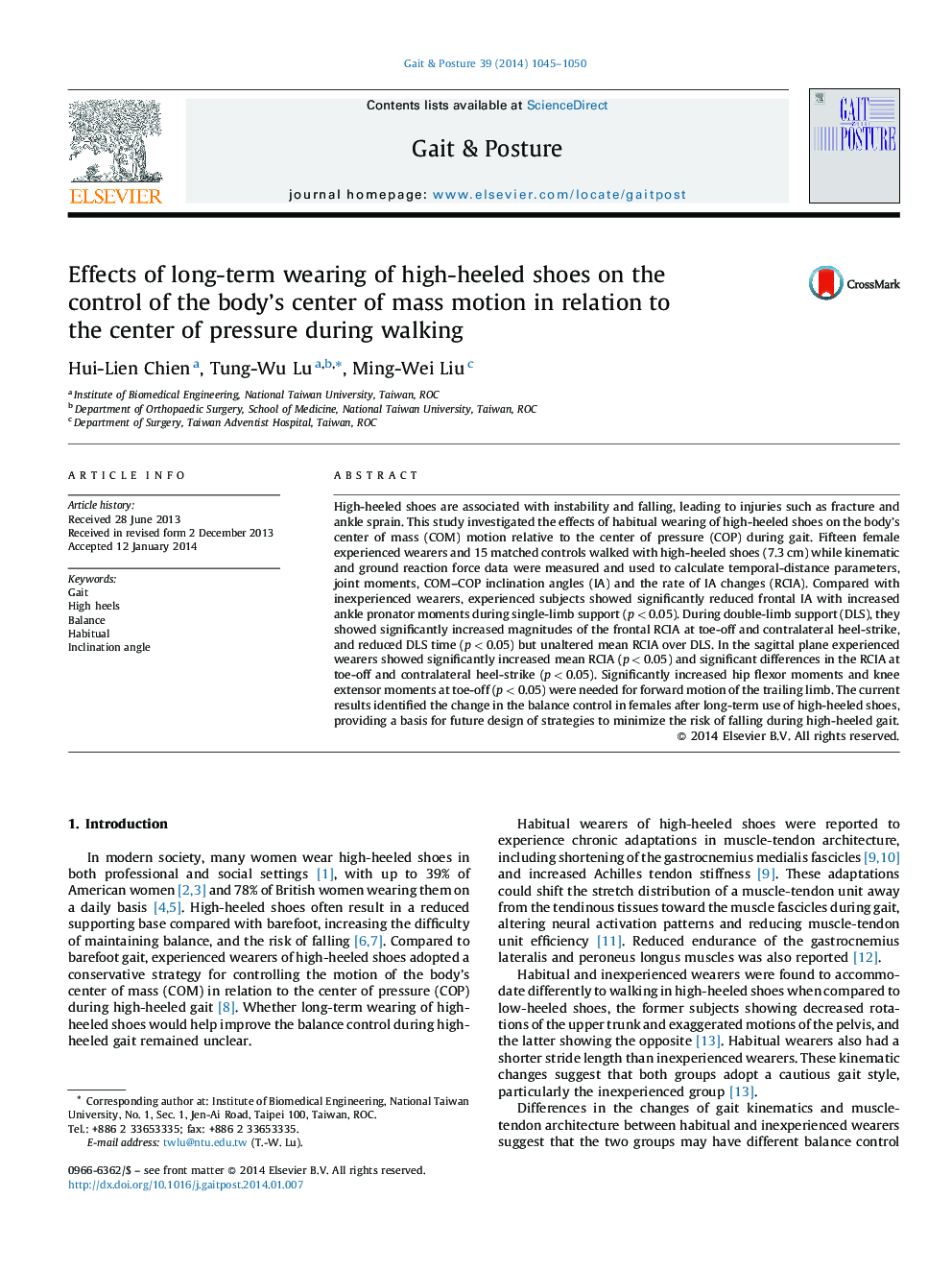| Article ID | Journal | Published Year | Pages | File Type |
|---|---|---|---|---|
| 6206290 | Gait & Posture | 2014 | 6 Pages |
â¢Balance control changes after long-term use of high-heeled shoes were identified.â¢Experienced wearers adopted a specific strategy for a more efficient control.â¢More efficient weight transfer during DLS was seen in experienced wearers.â¢Ankle pronator moments were increased during SLS in experienced wearers.
High-heeled shoes are associated with instability and falling, leading to injuries such as fracture and ankle sprain. This study investigated the effects of habitual wearing of high-heeled shoes on the body's center of mass (COM) motion relative to the center of pressure (COP) during gait. Fifteen female experienced wearers and 15 matched controls walked with high-heeled shoes (7.3 cm) while kinematic and ground reaction force data were measured and used to calculate temporal-distance parameters, joint moments, COM-COP inclination angles (IA) and the rate of IA changes (RCIA). Compared with inexperienced wearers, experienced subjects showed significantly reduced frontal IA with increased ankle pronator moments during single-limb support (p < 0.05). During double-limb support (DLS), they showed significantly increased magnitudes of the frontal RCIA at toe-off and contralateral heel-strike, and reduced DLS time (p < 0.05) but unaltered mean RCIA over DLS. In the sagittal plane experienced wearers showed significantly increased mean RCIA (p < 0.05) and significant differences in the RCIA at toe-off and contralateral heel-strike (p < 0.05). Significantly increased hip flexor moments and knee extensor moments at toe-off (p < 0.05) were needed for forward motion of the trailing limb. The current results identified the change in the balance control in females after long-term use of high-heeled shoes, providing a basis for future design of strategies to minimize the risk of falling during high-heeled gait.
